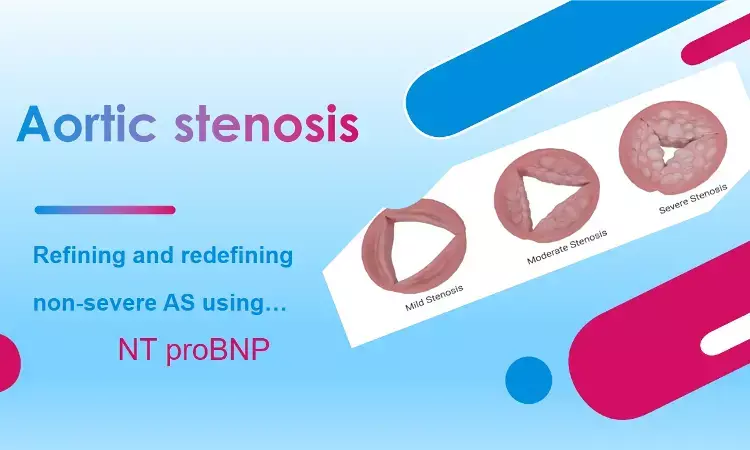- Home
- Medical news & Guidelines
- Anesthesiology
- Cardiology and CTVS
- Critical Care
- Dentistry
- Dermatology
- Diabetes and Endocrinology
- ENT
- Gastroenterology
- Medicine
- Nephrology
- Neurology
- Obstretics-Gynaecology
- Oncology
- Ophthalmology
- Orthopaedics
- Pediatrics-Neonatology
- Psychiatry
- Pulmonology
- Radiology
- Surgery
- Urology
- Laboratory Medicine
- Diet
- Nursing
- Paramedical
- Physiotherapy
- Health news
- Fact Check
- Bone Health Fact Check
- Brain Health Fact Check
- Cancer Related Fact Check
- Child Care Fact Check
- Dental and oral health fact check
- Diabetes and metabolic health fact check
- Diet and Nutrition Fact Check
- Eye and ENT Care Fact Check
- Fitness fact check
- Gut health fact check
- Heart health fact check
- Kidney health fact check
- Medical education fact check
- Men's health fact check
- Respiratory fact check
- Skin and hair care fact check
- Vaccine and Immunization fact check
- Women's health fact check
- AYUSH
- State News
- Andaman and Nicobar Islands
- Andhra Pradesh
- Arunachal Pradesh
- Assam
- Bihar
- Chandigarh
- Chattisgarh
- Dadra and Nagar Haveli
- Daman and Diu
- Delhi
- Goa
- Gujarat
- Haryana
- Himachal Pradesh
- Jammu & Kashmir
- Jharkhand
- Karnataka
- Kerala
- Ladakh
- Lakshadweep
- Madhya Pradesh
- Maharashtra
- Manipur
- Meghalaya
- Mizoram
- Nagaland
- Odisha
- Puducherry
- Punjab
- Rajasthan
- Sikkim
- Tamil Nadu
- Telangana
- Tripura
- Uttar Pradesh
- Uttrakhand
- West Bengal
- Medical Education
- Industry
NTproBNP levels can predict future events in non-severe AS, JAMA study.

Is non-severe aortic stenosis (AS) really as benign as we think? Recent studies have questioned the presumed low-risk status of patients with asymptomatic non-severe aortic stenosis (AS). This calls for a novel marker to risk stratify non-severe AS patients into those at high clinical risk and those at lower risk for disease progression.
In the recent issue of JAMA Cardiology, researchers Hadziselimovic et al have proposed a new risk marker for AS i.e. NT proBNP and have shown that NT-proBNP concentrations within the reference range at year 1 are associated with low clinical risk in patients with asymptomatic nonsevere AS. Conversely, an increased 1-year NT-proBNP level may be associated with high aortic valve events (AVE) rates.
Analysis of annual NT-proBNP concentrations in the multicenter, double-blind Simvastatin and Ezetimibe in Aortic Stenosis (SEAS) randomized clinical trial was performed. SEAS included 1873 patients with asymptomatic AS not requiring statin therapy with transaortic maximal flow velocity from 2.5 to 4.0 m/s and preserved ejection fraction.
Aortic valve events (AVEs), which are a composite of aortic valve replacement, cardiovascular death, or incident heart failure due to AS progression, were noted. Landmark analyses from year 1 examined the association of NT-proBNP concentrations with outcomes.
Adjusted NT-proBNP concentrations were normal in 77% patients with NT-proBNP values available at baseline and in 70.8% at year 1. During the next 2 years of follow-up, the AVE rates per 100 patient-years for normal vs increased adjusted NT-proBNP levels at year 1 were 1.39 vs 7.05 for patients with mild AS (P < .01), and 10.38 vs 26.20 for those with moderate AS (P < .01).
Corresponding all-cause mortality rates were 1.05 vs 4.17 for patients with mild AS (P < .01), and 1.60 vs 4.78 for those with moderate AS (P < .01).
The present study clarifies 2 fundamental notions regarding age- and sex-adjusted NT-proBNP level monitoring in patients with asymptomatic nonsevere AS. First, an increased NT-proBNP level at year 1, coupled with a 1.5-fold or greater increase from baseline, is associated with a substantial risk of subsequent AVEs. Second, a normal NT-proBNP level at year 1 is associated with a low incidence of AVEs and all-cause mortality over 2 subsequent years of follow-up.
Does this change our current practice?
"For patients with mild AS, a normal NT-proBNP level carries less than 5% AVE risk for at least 24 months, supporting the recommended 2- to 3-year interval for repeated echocardiography. The frequency of echocardiography may need to be individualized, however, for patients with mild AS with increased NT-proBNP levels, especially those with a 50% or greater increase during 1 year. Similar concerns relate to patients with moderate AS", note the authors.
Source: JAMA Cardiology: doi:10.1001/jamacardio.2021.5916
MBBS, MD , DM Cardiology
Dr Abhimanyu Uppal completed his M. B. B. S and M. D. in internal medicine from the SMS Medical College in Jaipur. He got selected for D. M. Cardiology course in the prestigious G. B. Pant Institute, New Delhi in 2017. After completing his D. M. Degree he continues to work as Post DM senior resident in G. B. pant hospital. He is actively involved in various research activities of the department and has assisted and performed a multitude of cardiac procedures under the guidance of esteemed faculty of this Institute. He can be contacted at editorial@medicaldialogues.in.
Dr Kamal Kant Kohli-MBBS, DTCD- a chest specialist with more than 30 years of practice and a flair for writing clinical articles, Dr Kamal Kant Kohli joined Medical Dialogues as a Chief Editor of Medical News. Besides writing articles, as an editor, he proofreads and verifies all the medical content published on Medical Dialogues including those coming from journals, studies,medical conferences,guidelines etc. Email: drkohli@medicaldialogues.in. Contact no. 011-43720751


